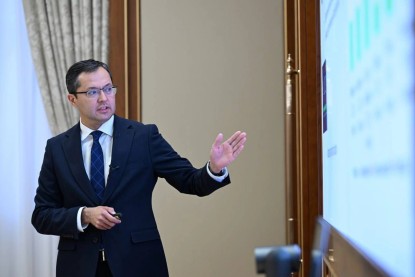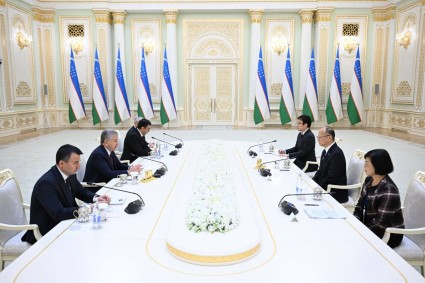The Central Bank set a new exchange rate of foreign currencies to the Uzbek soum from July 31. The US dollar to soum exchange rate has fallen by almost 93 soums over three trading sessions, to 12,345.12 soums, which is the lowest rate since March 12 (12,534.01 soums).
On Tuesday, commercial banks bough dollars at 12,480 soums to 12,570 soums range (only at BRB, Turonbank, Mikrokreditbank and the NBU), while the selling rate varied from 12,600 (Garant Bank, Apex Bank and UzSanoatQurilishBank) to 12,635 soums.
The strengthening of the soum is taking place against the backdrop of growing money transfers, foreign direct investment and eased financial conditions in the world.
In the first half of 2024, the volume of money transfers to Uzbekistan increased by 25% to $6.5 billion (some recipients convert the dollars they receive into soums, which stimulates demand for the national currency).
The governor of the Central Bank, Mamarizo Nurmuratov noted that this led to a significant increase in the flow of foreign currency into the country and helped stabilize the exchange rate.
“Thanks to the continuation of these positive trends, the current account deficit of the balance of payments is expected to decrease at the end of the year,” he said at a press conference on July 25.
Global financial background has begun to soften amid expectations that central banks in leading countries will lower interest rates. This will increase the ability of entrepreneurs, including commercial banks, to attract external resources. That is, banks and businesses will be able to attract relatively “cheap” foreign currency loans, some of which can be converted into soums, which will strengthen the national currency.
While, according to the Central Bank, in the first half of the year, the volume of direct investment in Uzbekistan increased to $5.3 billion, which is 36.6% more than the same period last year.
Uzbekistan’s international trade in January-June increased by 8.5% - to $31.8 billion. Exports added 5.5% (was 23%) - to almost $13 billion, and excluding gold - by 10.9% (12.5%), import growth slowed to 10.6% (was 17%) - to $18.8 billion. At the same time, the negative trade balance increased from $4.7 to $5.8 billion.












